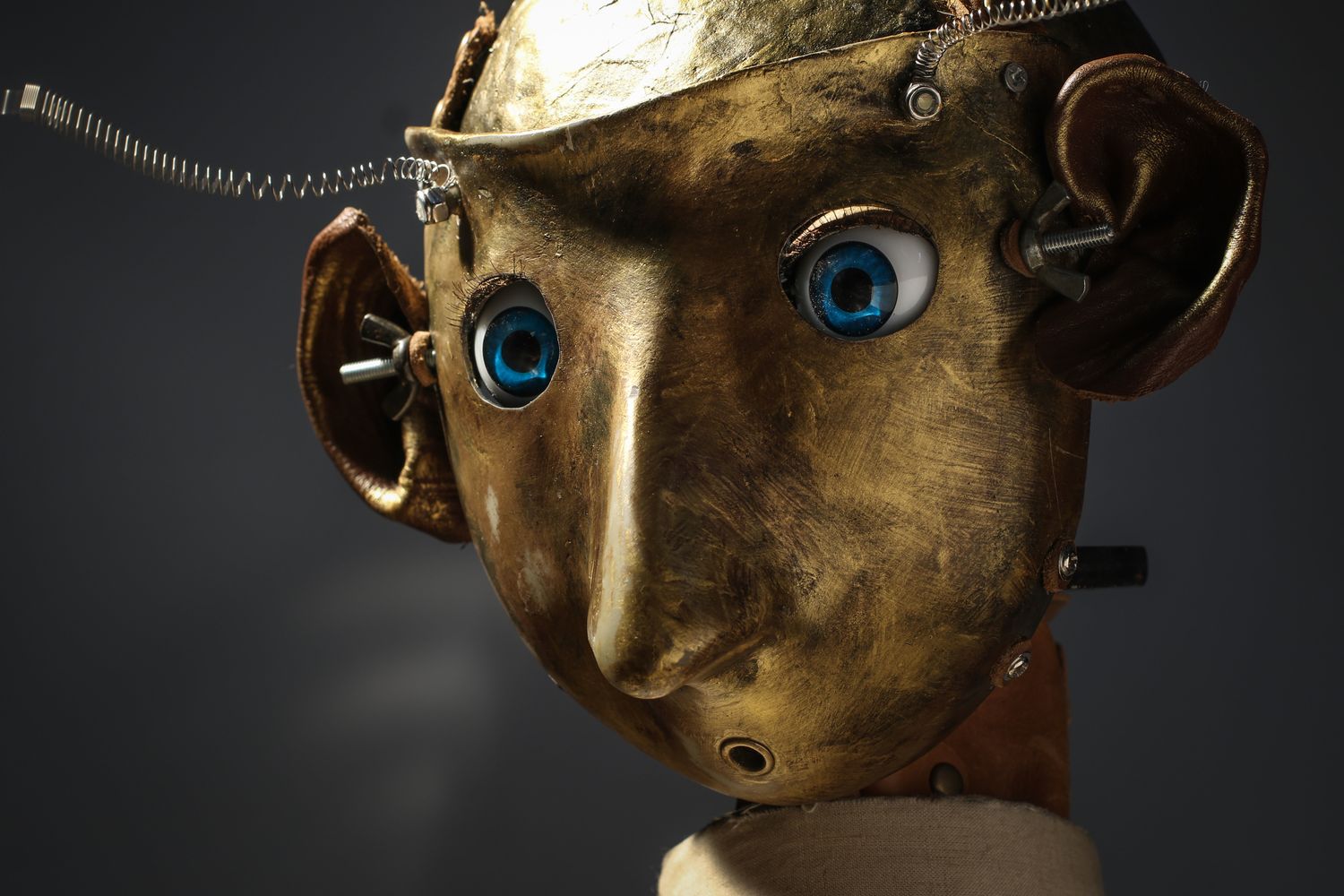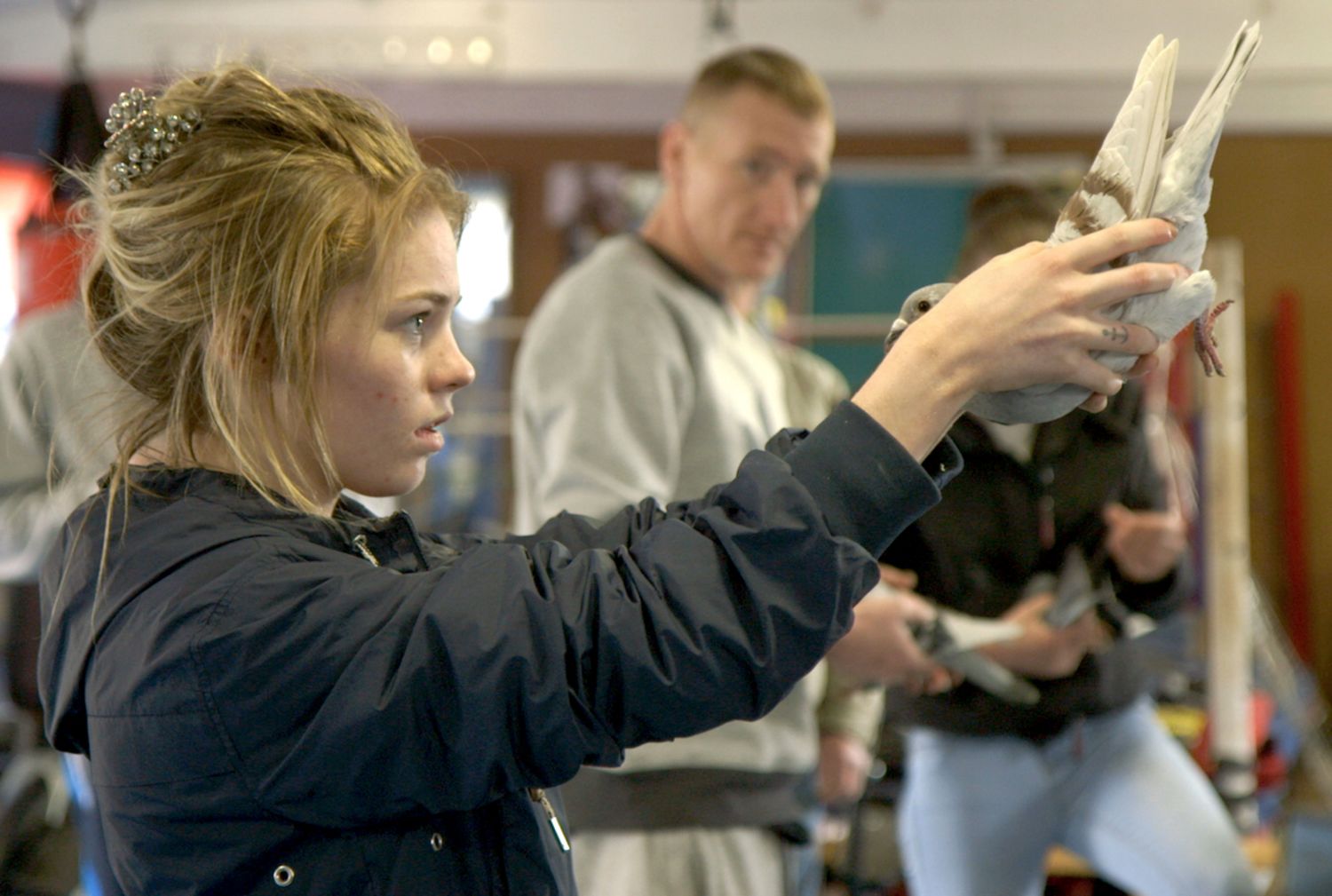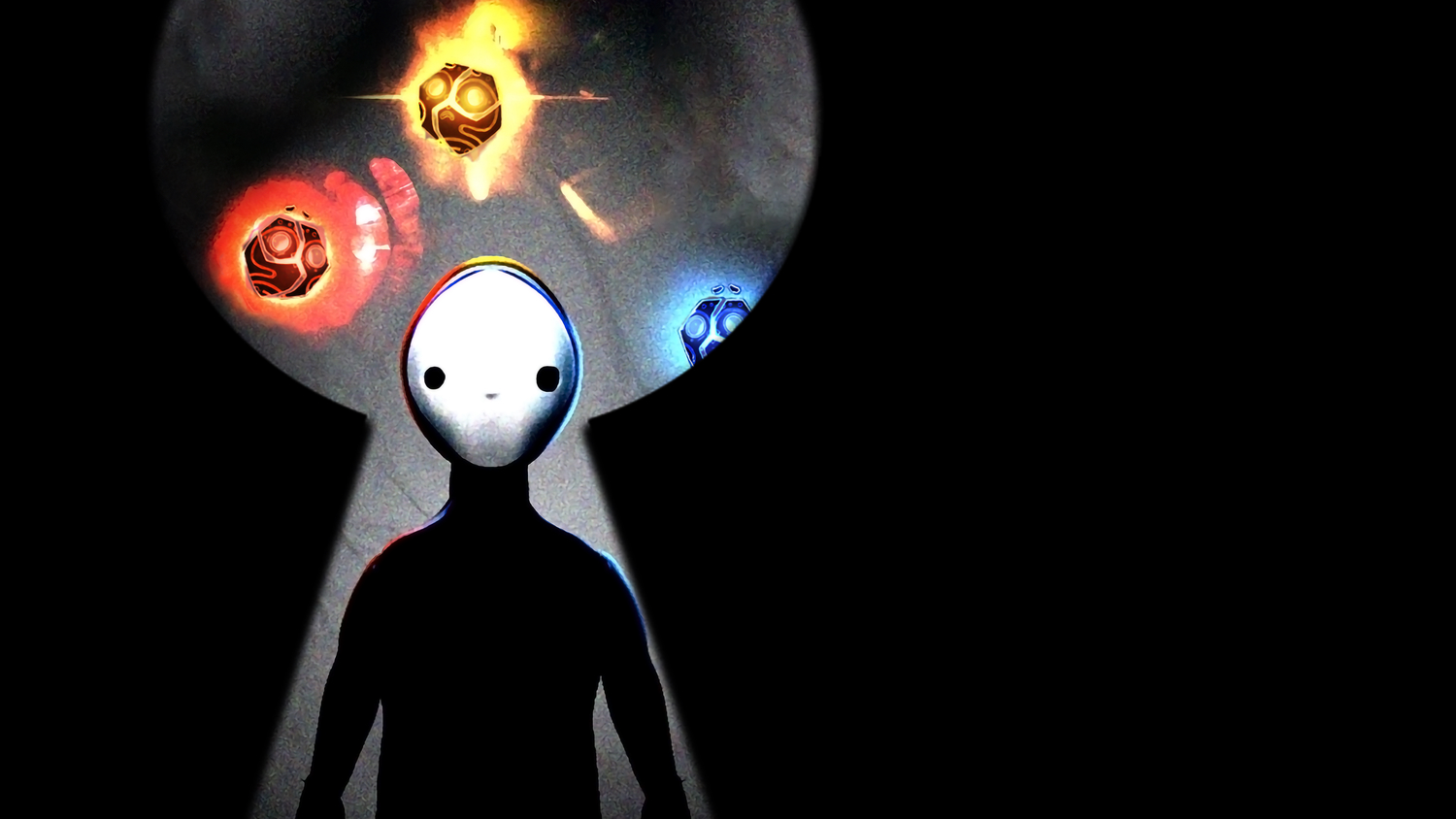
The Tribeca Film Festival is a wild carnival of commerce and creativity, often in the closest of embraces.
It kicked off epically, with Roger Ross Williams’ The Apollo (at The Apollo!). The film is more than a history of the legendary venue for African-American talent. It’s also the story of successful struggles by African-Americans of all kinds to find voice and place in a society that relentlessly marginalizes them. With a superb balance of celebrity moments, interviews and performance, it enchants while it also reshapes thinking. And, of course, it entertains. It should be part of the corrective retelling of America’s history in every school. Meanwhile, you’ll find it soon on HBO.
The Big Business of Documentary
If you were in any doubt that documentary is big business, Tribeca Film Festival was there as a refresher. Studios, platforms and networks brought their latest, biggest, and their celebrities, and Tribeca put a spotlight on them before they headed off to be slotted. HBO had, among others, Erin Lee Carr’s At the Heart of Gold, about the gymnastics scandal. CNN brought, among others, Rob Epstein and Jeffrey Friedman’s Linda Ronstadt: The Sound of My Voice, a loving portrait of the singer featuring her most popular songs and mostly footage from the good-looking past. Sony Pictures brought Alex Holmes’ Maiden, a sailing documentary.
The Internet platforms were present in force, with both originals and acquisitions (and sometimes, in the case of Netflix’s American Factory, acquisitions that were called originals). Amazon brought its original One Child Nation, by Nanfu Wang and Jialing Zhang. Hulu, with Magnolia Pictures, brought Ask Doctor Ruth. Before the fest even started, Netflix picked up Circus of Books, Rachel Mason’s delightful family memoir (and a project of IDA’s Fiscal Sponsorship Program). This film overcame my weariness at memoirs constructed of fuzzy and jerky VHS footage, in part because the tensions within the family reveal so much love amid the exasperation and in part because Mason has chosen such revealing small moments. Mom is capable and practical, and also bossy and stubborn. When easy-going Dad’s inventions couldn’t pay the bills, they decide to buy a highly lucrative gay-porn bookstore to keep the growing family afloat. At home, Mom is a strict family leader—and a devout Jew. The kids keep the family business a secret from their friends; employees are grateful for responsible employers; and all is well until two earthquakes shake the family up: Internet porn, and the revelation that one of the kids is gay. I’m sure Circus of Books will do well for Netflix because its metatags have to be pure gold. But I think the film is a success because it’s a warmly human story.
In a bold assertion of the commercial value of storytelling, Tribeca established an entirely new strand: Tribeca X, showcasing sponsored documentaries—or, if you like, “the intersection of storytelling, brands and advertising.” Speakers at the event reminded us that sponsorship is everywhere. For instance, most of the work in the immersive (AR, VR, 360) section of Tribeca had sponsorship, at a minimum from tech companies. But immersive work, as they also noted, is still bedeviled with problems of access and monetization.
The familiar approach of using do-good projects to burnish company reputation was on display. The 100%—Maggie’s Story, funded by three tech companies, is a visually-stunning, technologically interesting piece featuring ballerina Maggie Kudirka. Diagnosed with stage-4 breast cancer at age 23, Kudirka continues to dance, to pay her medical bills. The short and memorable piece is designed to fundraise for cancer treatments. It left me thinking: In what other developed nation do stage-4 cancer patients have to self-fund to survive? Is making high-end VR with high-end headsets, to beg for charity, a good way to address this part of the health-care crisis? Is it OK to applaud the uplift, never-give-up message and skip over the barbarism of the context?
And of course, there was plenty of music and sports (ESPN sponsored an entire section). As well, you could track plenty of indie and studio-funded TV pilots, and talent scouts could dive into the shorts.
Independent Vision
There were also some wonderful examples of independent longform work. Martha Shane and Ian Cheney’s Picture Character, for instance, is both quirky and compelling. It tells the history of emoji and emoji language (yes) while following several people who follow the approved process to get a new emoji into the Unicode set. Pure fun.
Two films introduce us to different aspects of the large and growing Chinese middle class that many documentaries and virtually all news reporting miss. Shosh Shlam and Hilla Medalia’s Leftover Women is a warmly intimate portrait of several Chinese women who, in their late 20s, are stigmatized as “leftover” by the Chinese government for failing to be married. (China’s one-child policy resulted in a demographic imbalance; this is the government trying to help out the guys by shaming holdouts.)
Yang Sun and S. Leo Chiang’s Our Time Machine, which won the award for Best Cinematography in a Documentary Feature for Sun and Shuang Liang, is a treasure of a cross-cultural experience. It features Maleonn, a celebrated artist in the Chinese art world who makes elaborate, life-sized puppets. He’s staging a complex play about memory, to honor his theater director father as he slips into Alzheimer’s. While in the play the hero creates a time machine to rescue his father, in real life the father slips ever deeper into dementia. Sun and Chiang’s ability to capture the theatrical wonder of Maleonn’s work helps introduce this extraordinary artist to the West, while the story of loss and the next generation rising is universal. The message of the film is simple, said Sun: “There is no time machine.” Chiang said that this will probably be the rare film that is distributed and broadcast in both China and the US. Since this is an Independent Television Service (ITVS)-funded film, look for it on public TV sometime in the next year or so. But if it comes to a theater before then, run to get your ticket.
Two cinéma vérité films showed the power of intimate access over years, and push us beyond clichés about poverty in developed countries. They are both set in post-apocalyptic landscapes of late capitalism, in the leftover urban areas abandoned by manufacturing. Scheme Birds started when Ellen Fiske and Ellinor Hallin, two Swedish filmmakers, met a magnetic personality—15-year-old Gemma—while spending time in Scottish public housing (or “scheme”) in a rustbowl town. They followed her for years, as she worked with her caring dad—who, like many there, raises pigeons—partied, had a baby, lost friends, and made the big decision to make her child her focus. Their deeply respectful and compassionate film makes no excuses and doesn’t need to, because it’s inside the lives of its characters. You can’t stop watching. Fittingly, Scheme Birds won the Best Documentary Feature Award and, for Fiske and Hallin, the Albert Maysles Award for Best New Documentary Director.

Finally, 17 Blocks, which won the award for Best Editing in a Documentary Feature for Jennifer Tiexiera, is Davy Rothbart’s “adopted” family’s story. He grew up in a beat-up part of Washington, DC, near an African-American family that embraced him. When he let the nine-year-old Emmanuel start playing with his camera and eventually gave him a camera of his own, a decade of filming began. And when Emmanuel, a good student who avoided drugs, was shot to death at 19 by an enemy of his drug-dealing older brother, the family turned to Davy to continue recording the story. This look inside a family navigating through bleak landscapes and bleaker opportunities, patching over spectacular potholes of inequality with enormous amounts of love, is another testament to the daily heroism required for poor people to survive their lives.
Stories for Change
For me, some of the most exciting parts of the festival were meeting some of the extraordinary people in films that reveal the force of social movements. Some of the Parkland students were present for screenings of After Parkland, a smartly executed film made by Nightline producers and journalists Emily Taguchi and Jake Lefferman. Barak Goodman and Chris Durrance’s handsome Slay the Dragon, a Participant Productions film, made gerrymandering into a gripping topic by focusing on two struggles. In Michigan, Katie Fahey led a successful citizen movement to create a nonpartisan, citizen-led redistricting process. Meanwhile, a husband-and-wife team of lawyers, Ruth Greenwood and Nick Stephanopoulos, participated in an effort to declare gerrymandering unconstitutional (Brett Kavanaugh’s appointment to the US Supreme Court ended that). They and others were all there, still working; Fahey told me she has started a new citizen-led organization for change, thepeople.org.
For They Know Not What They Do tells the story of four families whose children’s gay or trans identity made them reconsider their attitudes toward gender in light of their other religious values. The four stories, each of them unforgettable, are interwoven expertly (director Daniel Karslake tips his hat to his editor, Nancy Kennedy). “I decided to make the film when I noticed in 2015 I was getting death threats on the site of my earlier film, For the Bible Tells Me So,” Karslake said. “I wasn’t living in the US, and I thought, ‘What is going on in America?’ I felt it was urgently important to do this now. For me it’s about preventing suicide—so many LGBTQ people are at risk. Maybe if they see someone else’s parents coming around, it’ll give them hope.”
Yu Gu’s A Woman’s Work: The NFL’s Cheerleader Problem follows several women who have sued football teams and the NFL for fair working conditions. If you haven’t been following this sports story, NFL teams have been able to convince highly trained and talented women to cheer for pennies or even for free, and also to serve as stand-up sexual objects for fundraisers and VIP events. The women who spoke out have faced criticism from within cheerleading ranks as well as high-powered pushback from NFL and team lawyers. The film features two women with two very different, equally compelling stories, as they make the decision to fight for their rights. “I always thought I was trying to be a role model as a cheerleader,” Lacy Thibodeaux-Fields told me at the festival. “But in this work, I think I’m being a more important role model.”
Finally, Jeanie Finlay’s Seahorse, a BFI/BBC Storyville production, carries us into pioneering territory in terms of gender. Freddy, a gay transgender man who wants a family, decides to carry a baby—“It’s the cheapest and simplest solution,” he thinks. Why not just use his “hardware”? But as we follow the pregnancy, he and we see that it’s anything but simple. I found myself in uncharted emotional territory watching the film. And I was awed as much by Freddy’s bravery in allowing the filmmakers into his life as I was by the soup-to-nuts national health care he experienced and the extraordinary support of his family.
Immersive
As usual, viewing immersive work involved long waits, tech glitches, and some sympathy for the lovely young people in charge of regretfully telling you no. But it also involved some surprising pleasures.
Jessica Brillhart and Igal Nassima’s exploration of spatial audio (using Brillhart’s new app Traverse) mixed with AR, Into the Light, is a delectably combined set of sensations. You listen via earphones to Yo-Yo Ma playing Bach—he’s just a blob of light, but you can move closer to him, or behind him, or further away as you like—as you walk to various stations where elegant abstract pieces of 3-D artwork intertwine with real-world reality on your iPhone. Into the Light is a stunning example of this approach, which has endless and accessible possibilities. It’s experience, not story, and it’s glorious.
In Lance Weiler’s low-tech Where There’s Smoke, groups of four enter a room designed to replicate a study in his family home, which burned one morning. The group explores memory and its limits together, via found objects. It’s simple and effective as a way to think about family, memory and loss. The piece showcased Weiler’s ability to make experience meaningful and provocative.
Brandon Oldenburg’s War Remains takes podcast historian Dan Carlin’s recounting of the horrors of trench warfare and makes it real, in an elaborate installation with theme-park-ready electronic effects. If you want to experience trench warfare, including walking through and over bodies and getting gassed, this is for you; I did not make it through. “You’re not the first,” said the attendant kindly. This might be war porn or a horrifying reminder of the long legacy of that terrible war, or both.
I saw a lot of 360 video that made me wonder whether an ordinary documentary might have been more effective. You can experience the Washington Post’s 12 Seconds of Gunfire, by Suzette Moyer and Seth Blanchard, either way, and I liked both. It’s a graceful and troubling animation of a child’s trauma after her best friend is murdered on a school playground.
Often the pieces demonstrated steps forward in tech, whatever the nature of the finished product. Cave, by Ken Perlin, Kris Layng and Sebastian Herscher, tried out tech that lets up to 50 viewers share a VR experience, and see each other as avatars within it. We all sat in a virtual cave, set in deepest prehistory, listening to a young shaman. Kevin Cornish’s 2d Civil War ambitiously used audio tech to let viewers’ verbal cues trigger different video segments. The piece is an all-too-easy-to-imagine projection of a future in which Americans are once again at war with each other.
In general, the VR for Good films had poor visual resolution, no particular need to be in a 360 format, and a focus on how Northern charities are helping the dusky deserving poor elsewhere. One exception was Celine Tricart’s The Key, which thrust viewers into an alternate universe where we “grasped” a key and unlocked the secret of the little alien’s past. She is, it turns out, one of the tens of millions of refugees in the world today. I did have my doubts about whether you want to associate refugees with aliens, much less space aliens. But the key was lovely. And The Key won the Grand Jury Prize for Best Virtual Reality Immersive Story.

Fair Use to the Rescue
Several filmmakers found fair use an essential tool in making their work. (The International Documentary Association was a driving force in creating the Documentary Filmmakers’ Statement of Best Practices in Fair Use.) In A Woman’s Work, Yu Gu said, “Some footage is archival, and we made a clear decision to use that footage under fair use, because you’re examining the world of football and you’re using it a transformative way. For documentarians, when you are speaking truth to power, when you are not flattering a giant corporation, you have to be resourceful in order to include the world you are examining. Fair use gives the power to filmmakers as storytellers to take mainstream culture, put out by monolithic media institutions, and make it about communities and people from the ground up. The ability and power to do that is indispensable to artistic expression.”
For They Know Not What They Do’s Daniel Karslake noted, “Pretty much everything in the film but the first few shots is fairly used. I couldn’t have made the film in the way it’s made without the fair use doctrine.”
Matt Wolf, the director of Recorder: The Marion Stokes Project, had a particular need for fair use. Stokes, a civil rights activist, had a passion for documenting television, and kept VCRs recording television 24 hours a day for decades. Wolf interwove her idiosyncratic personal story with the historic events—and the seeming trivia too—that her recordings, held by the Internet Archive, now document for posterity.
“This film is only possible because of fair use,” Wolf said. “When you encounter an archive like this, you’re encountering stuff that was thrown into the trash can of history. Broadcasters didn’t even keep masters. Before we even started making the film, we consulted with Michael Donaldson [Donaldson & Callif] about the overall creative approach. We wanted to create a conceptual framework in which we could fairly use, because it would be impossible to track down all the rightsholders. The film unfolds in a timeline, and is itself a work of media criticism.” The raw material that Wolf digitized will be available to other filmmakers as well, at the Internet Archive.
Donaldson & Callif, one of the largest films to handle fair use for independent documentarians, had 30 clients with films in the Tribeca Film Festival.
Patricia Aufderheide is a professor at American University in Washington, DC.
